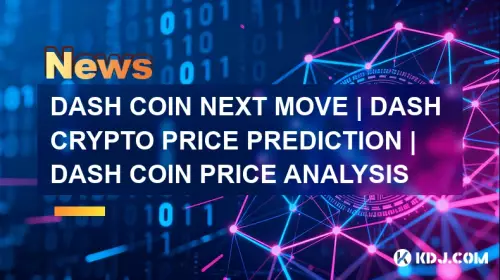-
 bitcoin
bitcoin $107015.826941 USD
-2.18% -
 ethereum
ethereum $3637.352324 USD
-5.18% -
 tether
tether $0.999831 USD
-0.02% -
 xrp
xrp $2.338078 USD
-6.23% -
 bnb
bnb $998.272150 USD
-6.97% -
 solana
solana $167.598257 USD
-10.12% -
 usd-coin
usd-coin $0.999863 USD
0.01% -
 tron
tron $0.282573 USD
-5.09% -
 dogecoin
dogecoin $0.169891 USD
-7.39% -
 cardano
cardano $0.557554 USD
-7.03% -
 hyperliquid
hyperliquid $39.914802 USD
-5.85% -
 chainlink
chainlink $15.414549 USD
-9.97% -
 bitcoin-cash
bitcoin-cash $510.361911 USD
-4.26% -
 ethena-usde
ethena-usde $0.999194 USD
-0.03% -
 stellar
stellar $0.282092 USD
-6.07%
Is XRP a good investment for the long term?
XRP enables fast, low-cost global payments via RippleNet, with growing institutional adoption despite regulatory challenges and centralization concerns.
Oct 25, 2025 at 09:00 pm

Understanding XRP’s Role in the Cryptocurrency Ecosystem
1. XRP operates as a digital asset designed for fast and low-cost international money transfers, primarily targeting financial institutions. Its underlying technology, the RippleNet network, enables cross-border payments to settle in seconds, contrasting sharply with traditional banking systems that can take days. This efficiency has attracted numerous banks and payment providers seeking to streamline operations.
2. Unlike many cryptocurrencies that rely on energy-intensive mining processes, XRP uses a consensus mechanism known as the Ripple Protocol Consensus Algorithm (RPCA). This approach reduces environmental impact and allows for quicker transaction validation, making it appealing for enterprises focused on scalability and sustainability.
3. The total supply of XRP was pre-mined at 100 billion tokens, with a portion held in escrow by Ripple Labs to ensure controlled distribution. This model prevents sudden inflationary pressures but has drawn scrutiny over centralization concerns, especially when large volumes are released from escrow into the market.
4. Regulatory clarity remains a pivotal factor influencing XRP’s standing. In December 2020, the U.S. Securities and Exchange Commission (SEC) filed a lawsuit against Ripple Labs, alleging unregistered securities offerings through XRP sales. While partial rulings have favored Ripple—such as the determination that XRP is not inherently a security when sold to retail investors—the legal landscape continues to shape investor sentiment.
5. Despite ongoing legal challenges, several financial institutions globally continue integrating Ripple’s solutions. Partnerships with banks in Asia, the Middle East, and Europe demonstrate sustained institutional interest, suggesting that real-world utility supports XRP’s long-term viability beyond speculative trading.
Market Performance and Investor Sentiment Trends
1. XRP has exhibited high volatility typical of digital assets, experiencing dramatic price swings during bull and bear markets. Its all-time high near $3 in 2018 was followed by prolonged downturns, influenced by regulatory uncertainty and broader crypto market corrections.
2. During periods of positive legal developments, such as favorable court rulings or dismissals of specific SEC claims, XRP has shown rapid price appreciation. These reactions highlight how external legal factors heavily influence short-term valuation, often overshadowing technological progress.
3. Trading volume spikes frequently coincide with news related to the SEC case or exchange delistings and relistings. Major platforms like Coinbase and Kraken have restored XRP trading following legal clarity, boosting liquidity and accessibility for retail investors.
4. Whale activity plays a notable role in XRP’s price dynamics. Large wallet movements tracked on blockchain analytics platforms often precede significant market shifts, prompting speculation about institutional accumulation or distribution phases.
Investor confidence tends to strengthen when exchanges reaffirm support for XRP, signaling growing acceptance despite regulatory gray areas.Technological Advancements and Network Utilization
1. Ripple has expanded its product suite beyond XRP, introducing On-Demand Liquidity (ODL), which leverages XRP as a bridge currency for cross-border transactions. ODL reduces the need for pre-funded nostro accounts, freeing up capital for financial institutions.
2. The Interledger Protocol (ILP), developed by Ripple, enables interoperability between different ledgers and payment networks. This technology positions XRP as a connector across fragmented financial systems, enhancing its relevance in a multi-chain world.
3. Recent upgrades to the XRP Ledger focus on improving smart contract capabilities and decentralized exchange functionality. These enhancements aim to attract developers and broaden use cases beyond payments, potentially increasing token utility.
4. Energy efficiency remains a strong selling point. The XRP Ledger consumes a fraction of the electricity used by proof-of-work blockchains, aligning with global trends toward sustainable fintech infrastructure.
Active development and strategic partnerships indicate ongoing efforts to deepen XRP’s integration into mainstream finance rather than relying solely on retail speculation.Frequently Asked Questions
What distinguishes XRP from other payment-focused cryptocurrencies?XRP stands out due to its direct collaboration with financial institutions and its integration into RippleNet, which offers tailored solutions for banks. While competitors like Stellar also target cross-border payments, XRP benefits from established relationships and a mature enterprise client base.
How does the SEC lawsuit impact XRP’s future adoption?The lawsuit has created hesitation among some U.S.-based platforms and investors. However, favorable court decisions have allowed exchanges to relist XRP, and non-U.S. markets continue adopting Ripple’s technology, limiting long-term damage to global expansion.
Can XRP be used for purposes beyond international transfers?Yes. Developments on the XRP Ledger now support decentralized applications, token issuance, and automated market makers. These features open avenues for DeFi participation, though adoption in this space remains early-stage compared to Ethereum or Solana.
Is holding XRP considered risky due to centralization?Centralization risks exist because Ripple holds a significant portion of XRP and influences network development. Critics argue this contradicts decentralization principles, yet supporters emphasize reliability and faster decision-making enabled by centralized oversight.
Disclaimer:info@kdj.com
The information provided is not trading advice. kdj.com does not assume any responsibility for any investments made based on the information provided in this article. Cryptocurrencies are highly volatile and it is highly recommended that you invest with caution after thorough research!
If you believe that the content used on this website infringes your copyright, please contact us immediately (info@kdj.com) and we will delete it promptly.
- Red Poppy Coin, Australia: A Collector's Guide to the 2025 Release
- 2025-11-04 11:00:15
- Shiba Inu Gets the Nod: Good News for SHIB Holders!
- 2025-11-04 09:35:12
- PI Faces Scrutiny, LINK Gains, BlockDAG Miner Momentum: A Crypto Triad
- 2025-11-04 09:35:12
- Spare Change, Cash, and Bang for Your Buck: A New Yorker's Guide
- 2025-11-04 11:30:01
- Aster, CZ, and $25M: Decoding the DeFi Drama
- 2025-11-04 11:30:01
- Blazpay: The Next Big Crypto Coin Ready to Explode?
- 2025-11-04 09:00:01
Related knowledge

How does the XRP burn mechanism work?
Oct 25,2025 at 09:23am
The XRP Burn Mechanism: Understanding the BasicsThe XRP burn mechanism is an integral part of the Ripple network’s design, ensuring long-term stabilit...

What is the total supply of XRP?
Oct 26,2025 at 04:00pm
The total supply of XRP is 100 billion tokens. This number was established at the inception of the cryptocurrency and remains fixed, meaning no additi...

How to find my XRP transaction hash (TxID)?
Oct 28,2025 at 12:54am
Understanding XRP Transaction Hash (TxID)1. Every transaction on the XRP Ledger generates a unique identifier known as a transaction hash, or TxID. Th...

Can you store XRP on a MetaMask wallet?
Oct 28,2025 at 03:37pm
Understanding XRP and MetaMask Compatibility1. XRP operates on the Ripple network, which follows a different protocol than Ethereum-based tokens. This...

Is XRP a good investment for the long term?
Oct 25,2025 at 09:00pm
Understanding XRP’s Role in the Cryptocurrency Ecosystem1. XRP operates as a digital asset designed for fast and low-cost international money transfer...

What is the difference between Ripple and XRP?
Oct 26,2025 at 09:19am
Difference Between Ripple and XRP1. Ripple refers to a technology company that develops solutions for global financial transactions, particularly targ...

How does the XRP burn mechanism work?
Oct 25,2025 at 09:23am
The XRP Burn Mechanism: Understanding the BasicsThe XRP burn mechanism is an integral part of the Ripple network’s design, ensuring long-term stabilit...

What is the total supply of XRP?
Oct 26,2025 at 04:00pm
The total supply of XRP is 100 billion tokens. This number was established at the inception of the cryptocurrency and remains fixed, meaning no additi...

How to find my XRP transaction hash (TxID)?
Oct 28,2025 at 12:54am
Understanding XRP Transaction Hash (TxID)1. Every transaction on the XRP Ledger generates a unique identifier known as a transaction hash, or TxID. Th...

Can you store XRP on a MetaMask wallet?
Oct 28,2025 at 03:37pm
Understanding XRP and MetaMask Compatibility1. XRP operates on the Ripple network, which follows a different protocol than Ethereum-based tokens. This...

Is XRP a good investment for the long term?
Oct 25,2025 at 09:00pm
Understanding XRP’s Role in the Cryptocurrency Ecosystem1. XRP operates as a digital asset designed for fast and low-cost international money transfer...

What is the difference between Ripple and XRP?
Oct 26,2025 at 09:19am
Difference Between Ripple and XRP1. Ripple refers to a technology company that develops solutions for global financial transactions, particularly targ...
See all articles










































































